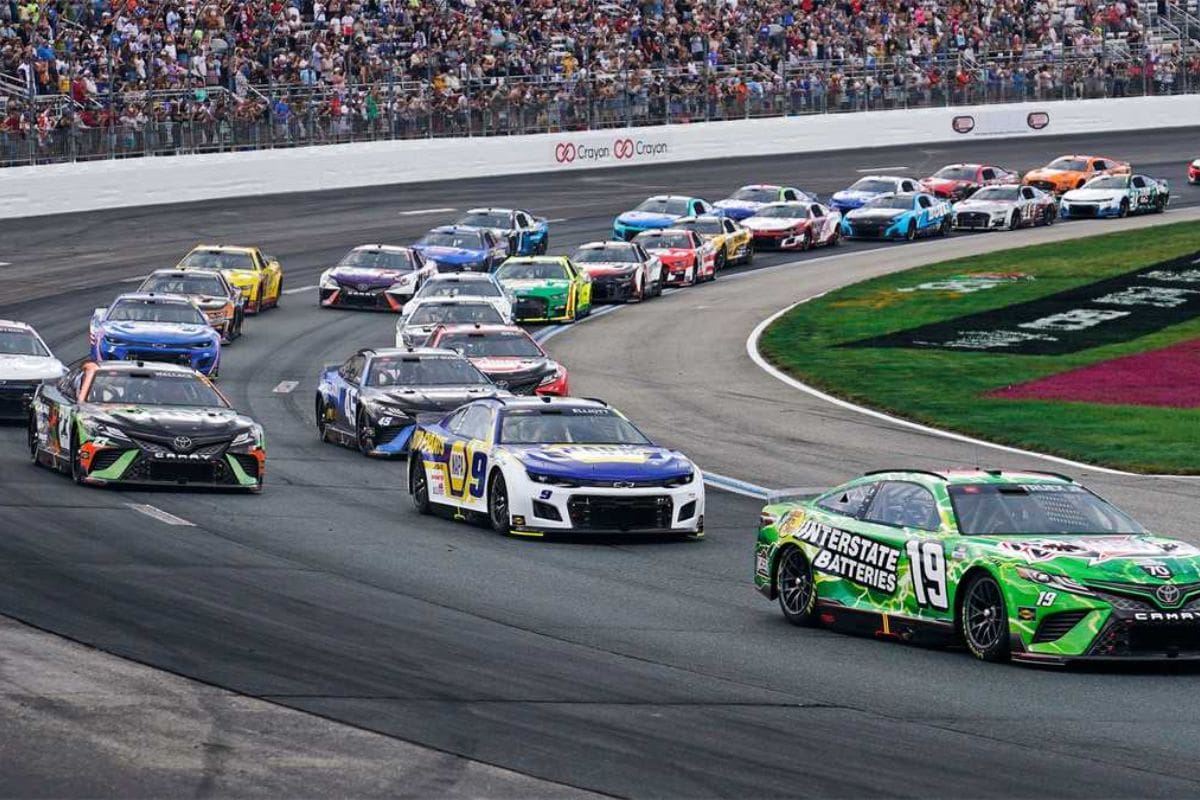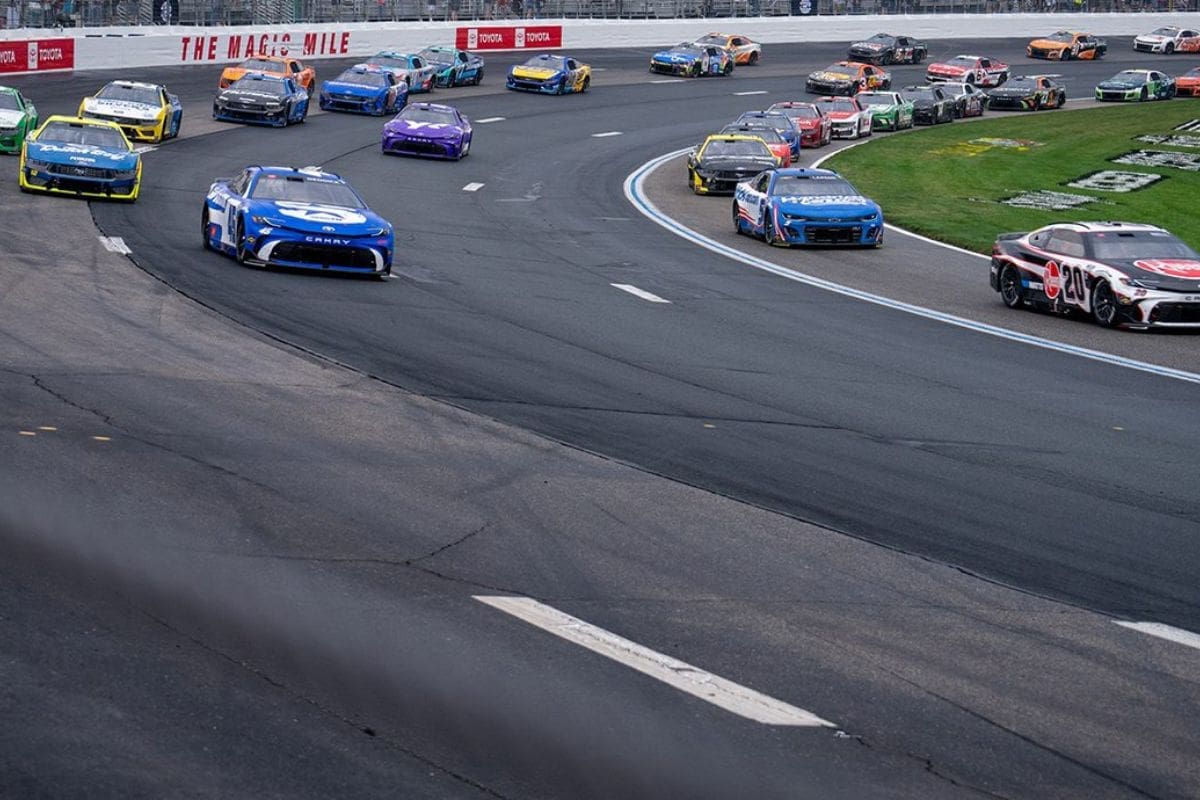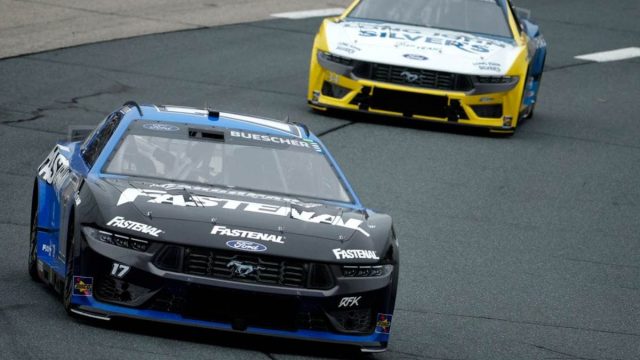NASCAR Chaos: The recent rain tire gamble during NASCAR’s New Hampshire race has sparked a significant uproar among drivers, particularly shining a light on the internal tensions surrounding race-day decisions. Chris Gabehart’s criticisms have brought attention to gaps in communication and accentuated the strategic complexities teams face under unpredictable weather conditions. Differing reactions from drivers like Josh Berry and Christopher Bell showcase the diverse impacts on performance and team strategies. This controversy raises critical questions about the balance between maintaining safety and ensuring an engaging race, leaving the NASCAR community in a heated debate over the fairness and future of such decisions.
Key Highlights
- Rain delay at New Hampshire led to controversial decision to resume racing under wet conditions.
- Rain tire usage created a performance gap, impacting driver standings and sparking debate.
- Chris Gabehart criticized NASCAR’s communication breakdown affecting team strategies.
- Drivers had mixed reactions to racing in the rain, with some thriving and others struggling.
- The unpredictability of weather added complexity and unease among teams.
NASCAR’s Rain Delay at New Hampshire
The rain delay at New Hampshire Motor Speedway, which halted the race with 82 laps remaining, introduced a novel challenge for NASCAR as the decision to use rain tires sparked widespread debate among drivers and crew chiefs.
The unpredictability of weather uncertainty added an extra layer of complexity to the race strategies. While the introduction of rain tires aimed to mitigate delays and maintain the race’s momentum, it also brought tire performance into sharp focus.
Drivers like Josh Berry and Christopher Bell thrived under these new conditions, capitalizing on the improved grip provided by the rain tires. Conversely, others, such as Noah Gragson and Bubba Wallace, found the altered track conditions detrimental to their performance. The variance in driver reactions highlighted the diversity in how teams adapted to the sudden change.
Effective team communication became paramount as crew chiefs and drivers navigated this uncharted territory. Decisions had to be made swiftly, balancing the immediate needs of tire performance with the overall race strategies.
This episode highlighted the importance of agility and adaptability in motorsport, where weather-induced strategy shifts can greatly impact outcomes. The debate continues on whether this approach should become a standard practice in future races.
Criticism from Chris Gabehart
Chris Gabehart’s sharp criticism during his appearance on ‘Kevin Harvick’s Happy Hour’ podcast highlighted the disarray and breakdown in communication that plagued NASCAR’s decision-making process during the rain tire gamble at New Hampshire Motor Speedway. Gabehart, crew chief of the No. 11 car, did not hold back as he recounted his experience, emphasizing the clear confusion that overtook his team.
‘I’m living as the leader of the 11. What’s next? When’s it going to happen? We haven’t lived it yet, right? So really just getting through the logistics of all that was obviously unprecedented,‘ -(Gabehart )
The breakdown in communication had a substantial impact on team strategy, leading to widespread driver complaints. Gabehart’s frustration was evident as he described the chaotic scene where real-time decisions seemed erratic and unpredictable. Harvick echoed these sentiments, noting the challenge in discerning whether the confusion stemmed from television broadcasts or NASCAR’s actual directives.
- Gabehart’s frustration with real-time decision-making
- Driver complaints about erratic communication
- Impact on team strategy and race outcomes
- NASCAR’s struggle with effective decision-making
The communication breakdown during this critical moment highlighted significant flaws in NASCAR’s decision-making process, necessitating a thorough review to prevent future disruptions and ensure smoother operations.

Logistical Challenges and Strategy Adjustments
Handling the logistical challenges and strategy adjustments during the rain tire gamble at New Hampshire Motor Speedway proved exceedingly difficult, worsening the confusion and frustration already prevalent among teams and drivers.
“We opened Richmond that way and we ran a heat race at North Wilkes-Barrel that way, but you realize they’re getting ready to hand out a cup race win,”-(chris)
Pit stops became critical points where split-second decisions on tire changes could either make or break a race. Teams had to choose between rain tires or slicks, each option carrying significant risks and rewards given the unpredictable weather. This scenario required rapid adjustment of racing tactics, balancing aggression with caution.
The logistical hurdles were immense, as teams had to adapt without a clear precedent. As Gabehart noted, the sheer unpredictability made effective strategy development nearly impossible. This high-stakes gamble, driven by the volatile conditions, led to significant unease among teams.
NASCAR’s Controversial Call
Despite the potential benefits, NASCAR’s decision to continue the race under wet conditions sparked significant debate and highlighted the complex dynamics between safety, strategy, and competition. The move to implement rain tires, although intended to maintain the integrity of the race schedule, introduced a multitude of challenges and unexpected outcomes.
- Driver Frustration: Many drivers, including Bubba Wallace, struggled to adapt to the wet conditions, leading to significant drops in their standings.
- Race Controversy: The decision to resume racing in the rain was met with mixed reactions. Some drivers thrived, while others faced insurmountable difficulties, polarizing opinions within the community.
- Weather Uncertainty: The unpredictable weather conditions added another layer of complexity, forcing teams to constantly reassess their strategies.
- Performance Disparity: The introduction of rain tires created a noticeable performance gap, with some drivers skyrocketing in the rankings while others plummeted.
This controversial decision highlighted the delicate balance NASCAR must maintain between ensuring competitive fairness and prioritizing driver safety. Christopher Bell’s victory and the dramatic position changes for drivers such as John Hunter Nemechek and Chase Briscoe exemplify the significant impact of tire strategy under adverse conditions.
Impact on Drivers and the Debate
The rain tire gamble greatly influenced driver performance and ignited a heated debate within the NASCAR community regarding the fairness and safety of racing under wet conditions. Driver frustration was palpable, as evidenced by Noah Gragson’s comments on his lack of grip and his unintended collision with Bubba Wallace. Gragson’s admission highlighted the challenges that wet-weather conditions imposed, leading to a polarized reaction from fans and teams both.
“We knew typically on the road courses and even the ovals that we’ve ran in the rain we’ve been pretty good truthfully. I just lacked grip. Super loose all the way around the track. Must’ve hit the paint on entry to (Turn) 1, and not intentionally by any means with the 23 (Bubba Wallace). Just a mistake on my part. It was unfortunate and I apologize to the 23 guys for ruining their day.”-(CHris)
The weather uncertainty added a layer of complexity to team strategies, forcing crews to make rapid decisions about tire choices and race tactics. While some viewed the rain tires as a necessary adaptation that kept the event moving, others argued it compromised racing fairness. The incident with Wallace, which led to what fans dubbed ‘Bubba tantrums,’ emphasized the tensions and differing perspectives within the paddock.
Fan reactions have been mixed; while some appreciated the added unpredictability, others felt the race outcome did not genuinely reflect drivers’ skills. As the debate rages on, the core issue remains whether NASCAR’s decision improved the spectacle or undermined the competitive integrity. Ultimately, this controversy highlights the ongoing struggle to balance excitement and fairness in motorsports.

News in Brief : NASCAR Chaos
The rain tire gamble at New Hampshire Motor Speedway has left the NASCAR community in a state of reflection and debate. The decision to continue the race under wet conditions, while aimed at maintaining momentum and minimizing delays, exposed significant challenges in communication, strategy, and performance disparity among drivers. Chris Gabehart’s criticisms underscored the need for better coordination and decision-making processes, while the varied reactions from drivers highlighted the complexities of adapting to unpredictable weather conditions.
ALSO READ: Kevin Harvick Condemns NASCAR’s Wet Tire Chaos in Fiery Rant
